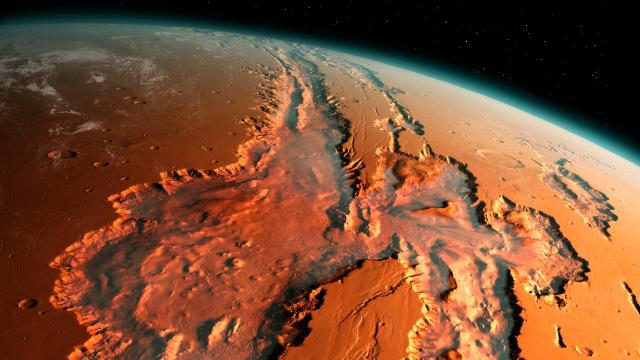For as long as we can remember Mars has always been the “red” planet. The red dirt and rock that makes up the planet’s surface have always given desert wasteland vibes. But scientists believe Mars was once brimming with water and now they may know where it all went.
Images of Mars tell us that it was once home to ancient rivers, oceans and lakes. For years, the theory has been that Mars’ atmosphere was lost to space, turning it into the inhabitable desert planet it is now. As the atmosphere dissipated, so did the planet’s water. But new research has arrived to challenge that theory.
Mars’ water is still there
A team of researchers from Caltech and JPL published a new study in the Science journal this week. Their research found that around 4 billion years ago, Mars held enough water to cover the entire planet in an ocean of around 100-1500 meters deep. So where did this huge amount of water go?
The paper posits that this amount of water couldn’t have disappeared solely through atmospheric escape. Instead, it could be trapped in the planet’s crust.
Using data from Mars orbiters and rovers, the team looked into the ratio of deuterium to hydrogen (D/H). They also considered the quantity of water on Mars in all possible forms, including vapour, liquid and ice, along with the planet’s current atmosphere.
Given the D/H readings in Mars’ atmosphere, it doesn’t seem feasible that atmospheric escape could be the sole reason for the loss of water on the planet. But it could be explained with dual reasoning — water is both escaping into the atmosphere and is trapped within the planet’s surface.
“Atmospheric escape clearly had a role in water loss, but findings from the last decade of Mars missions have pointed to the fact that there was this huge reservoir of ancient hydrated minerals whose formation certainly decreased water availability over time,” Bethany Ehlmann, one of the authors of the paper, said in a statement to Caltech.
As the study explains, when water meets rock a process known as chemical weathering occurs, which results in new formations such as clay. Minerals within the surface that contain water as part of their structure soak these particles up.
This is something that occurs on Earth as well. Although, this process differs slightly due to tectonic activity on Earth which continually recycles the water through our planet’s surface and back into the atmosphere.
As Mars is largely tectonically inactive, this process of chemical weathering or “drying” becomes permanent.
“All of this water was sequestered fairly early on, and then never cycled back out,” lead author Eva Scheller told Caltech.
Now that the Perseverance Rover is out there on Mars zapping rocks, there’s the opportunity to gather more evidence towards this theory. Scheller and Ehlmann will now aid NASA in its operations to bring these samples back to Earth for further study.
